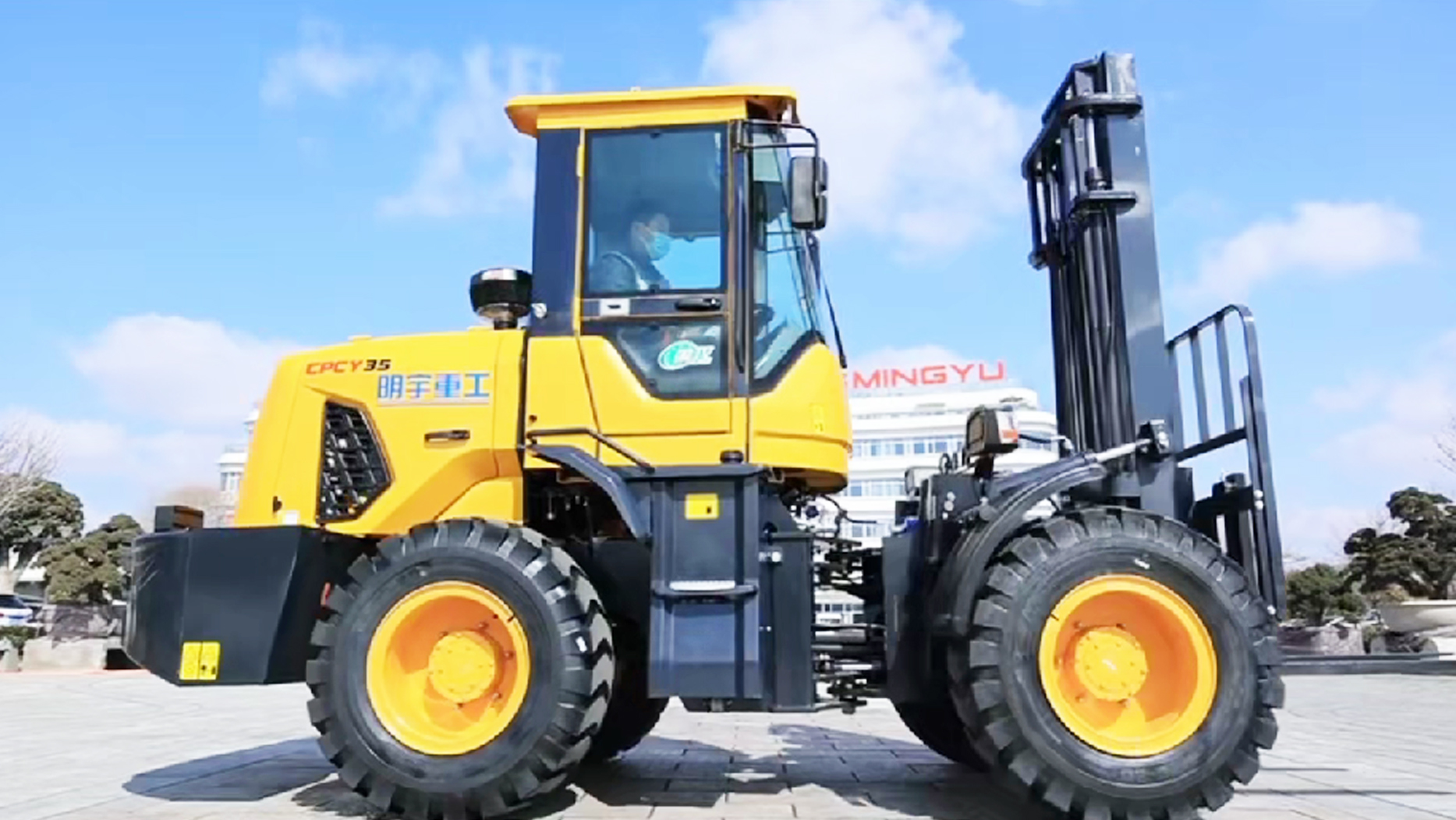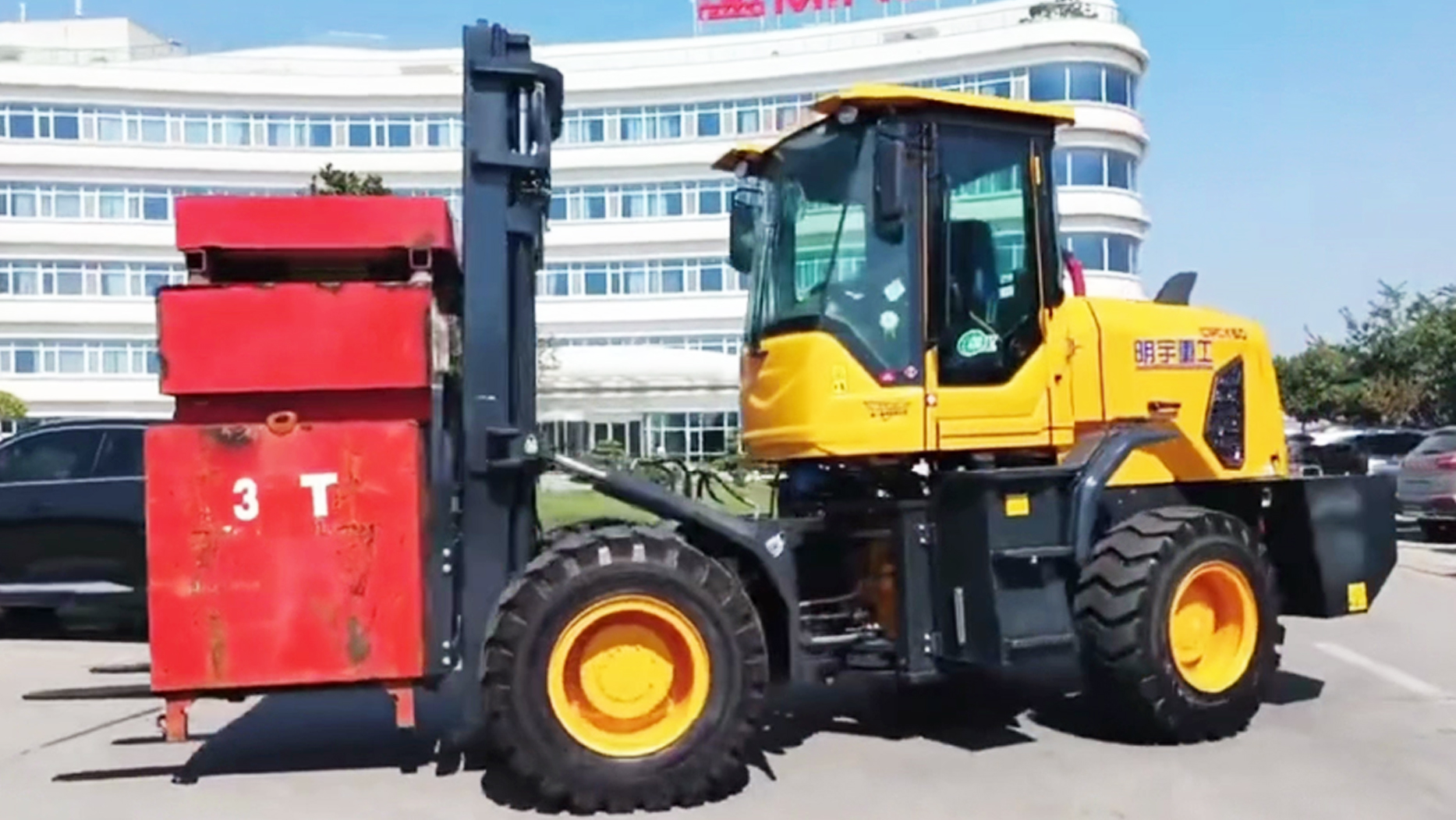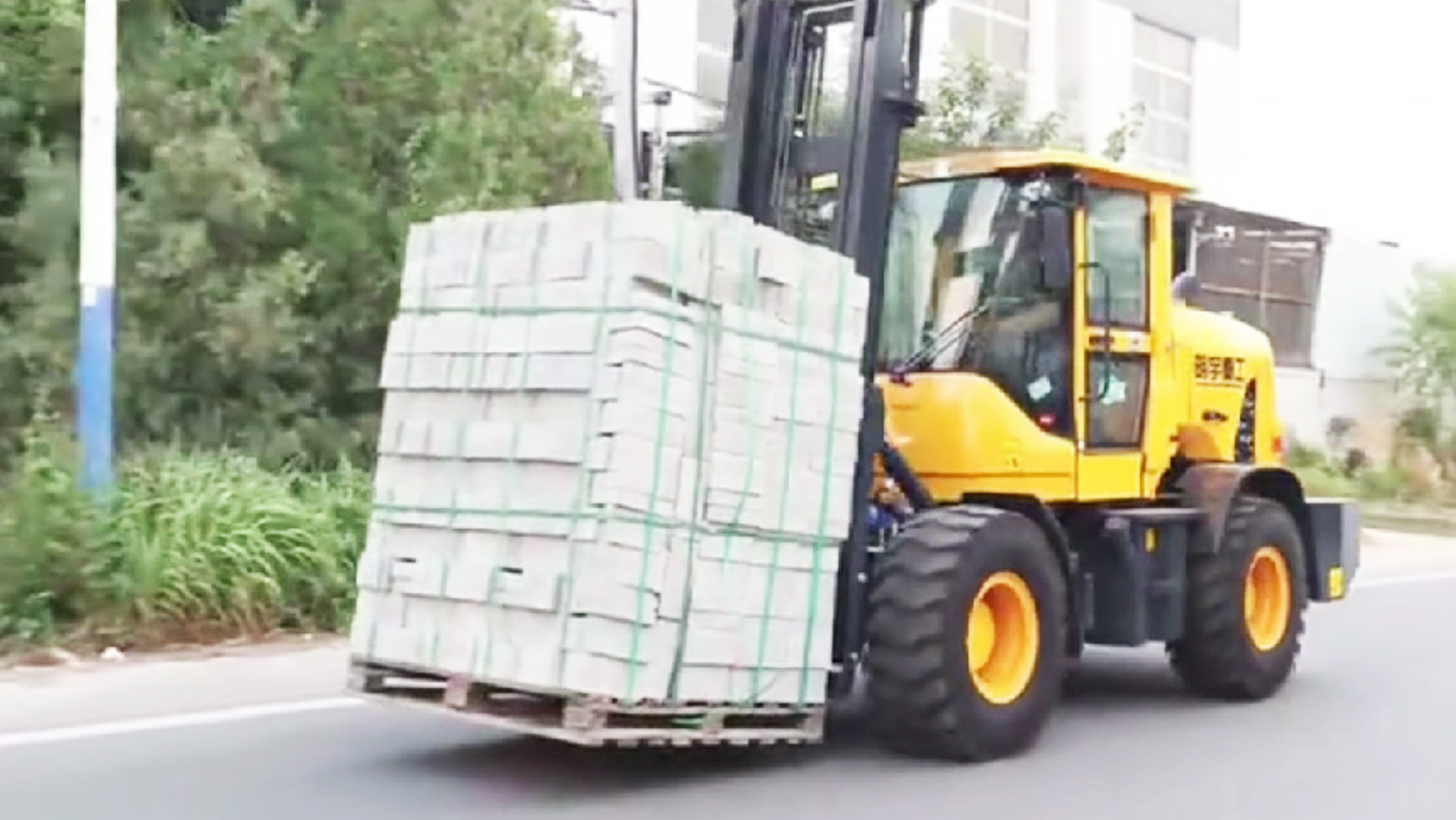Rough terrain forklifts are purpose-built to tackle challenging environments, excelling where standard industrial forklifts falter. Their robust design, powerful engines, and enhanced traction make them indispensable on construction sites, farms, and other unpaved, uneven landscapes. A critical question that often arises, particularly for operations with varied topography, is: Can rough terrain forklifts safely and effectively operate on steep slopes?
The answer is yes, but with significant caveats. While rough terrain forklifts are engineered to handle inclines far better than their industrial counterparts, their ability to operate on steep slopes is governed by strict safety parameters, the machine's specific design capabilities, and, crucially, operator skill. Understanding these factors is vital for maximizing productivity while preventing dangerous incidents.
Understanding the Capabilities: What Makes Them "Rough Terrain"?
The features that define a rough terrain forklift are precisely what enable its slope-handling capabilities:
Robust Chassis and Heavy-Duty Frame: Unlike the lighter, rigid frames of industrial forklifts, rough terrain models feature reinforced chassis designed to withstand twisting forces and absorb shocks from uneven ground. This inherent stability is paramount on inclines.
Powerful Diesel Engines: The vast majority are forklift diesel models. Diesel engines provide superior torque and sustained power necessary to propel a loaded machine up a grade. A forklift 3 ton diesel model, for example, is designed with ample power for this purpose.
4WD (Four-Wheel Drive): Most rough terrain forklifts come with 4WD, ensuring maximum traction by distributing power to all wheels. This prevents slippage on loose, wet, or steep surfaces.
Large, Aggressive Tires: Equipped with wide, deep-tread pneumatic tires (often foam-filled for puncture resistance), they provide excellent grip and flotation on soft, muddy, or gravelly slopes.
High Ground Clearance: Allows the forklift to navigate uneven terrain and obstacles on slopes without getting hung up.
Oscillating Axles: Many models feature oscillating axles that allow the wheels to maintain contact with the ground, even on highly uneven slopes, improving stability and traction.

Slope Ratings: The Critical Specification
Every rough terrain forklift has a specified gradeability or slope rating, which indicates the maximum incline (expressed as a percentage) the machine can safely climb or descend. This rating is determined by the manufacturer based on the forklift's design, power, weight distribution, and braking capabilities.
How Gradeability is Expressed: A 15% grade means that for every 100 feet of horizontal distance, the elevation changes by 15 feet. This is equivalent to an angle of approximately 8.5 degrees. A 30% grade is roughly 16.7 degrees, and a 45% grade is about 24.2 degrees.
Typical Ranges: While industrial forklifts might be limited to 5-10% grades, rough terrain forklifts often boast gradeabilities ranging from 25% to 45%, and some specialized models can handle even steeper inclines when unloaded.
Key Consideration: The published gradeability is usually for an unloaded forklift. The ability to climb or descend a slope with a load is significantly reduced. Always consult the forklift's operator manual for specific loaded and unloaded slope limitations.
 Safety Protocols for Slope Operation: Non-Negotiable Rules
Safety Protocols for Slope Operation: Non-Negotiable Rules
Operating any forklift on a slope inherently increases the risk of tipping, rollovers, and loss of control. Strict adherence to safety protocols is paramount:
Always Consult the Operator Manual: This is the definitive guide for your specific rough terrain forklift model. It outlines maximum permissible grades, load limitations on slopes, and specific operating procedures.
Assess the Slope: Before attempting to ascend or descend, evaluate the slope's steepness, surface condition (muddy, icy, loose gravel), and any obstacles. Never exceed the forklift's rated gradeability for the given load and conditions.
Position the Load Correctly:
Ascending (Going Up): Always travel with the forks pointing downhill and the load on the uphill side. This keeps the load on the drive wheels for traction and uses the forklift's weight to counteract tipping backwards.
Descending (Going Down): Always travel with the forks pointing downhill and the load on the uphill side (i.e., driving in reverse). This allows the forklift's weight to provide braking assistance and minimizes the risk of the load sliding off the forks or the forklift tipping forward.
Important Note: Never attempt to turn on a slope with a raised load. Always lower the load as much as possible when traveling on an incline.
Keep the Load Low: The lower the load, the lower the center of gravity, and the more stable the forklift. Always travel with the forks just high enough to clear obstacles.
Maintain a Consistent, Slow Speed: Avoid sudden acceleration, braking, or sharp turns. Smooth, controlled movements are essential.
Avoid Turning on Slopes: Turns on inclines significantly increase the risk of lateral instability and rollovers. If a turn is necessary, do so on flat, level ground before or after the slope.
Never Overload: Exceeding the forklift's rated capacity, especially on a slope, is extremely dangerous and can lead to immediate instability.
Watch for Surface Changes: Be vigilant for changes in surface condition (e.g., wet spots, loose gravel, soft ground) that could compromise traction or stability.
Clear the Path: Ensure the path up or down the slope is clear of obstructions, debris, or other personnel.
Operator Training and Experience: Only trained and certified operators with specific experience in operating rough terrain forklifts on slopes should attempt such maneuvers. Their judgment and skill are critical.
 What About Loaded vs. Unloaded Operation?
What About Loaded vs. Unloaded Operation?
A common misconception is that if a rough terrain forklift can handle a certain slope unloaded, it can do so with any load. This is incorrect and dangerous.
Unloaded: An unloaded forklift's center of gravity is lower and more stable, allowing it to climb steeper grades than when loaded.
Loaded: Adding a load significantly raises the combined center of gravity and shifts the weight distribution. This drastically reduces the maximum safe gradeability. The heavier and higher the load, the shallower the slope it can safely handle. Always consult the load chart and slope rating for the specific load configuration.
The Role of Design and Technology
Modern rough terrain forklifts from manufacturers like MINGYU FORKLIFT incorporate features that enhance their slope performance:
Hydrostatic Transmissions: Often found in higher-end models, these provide smooth, precise power delivery, excellent control on inclines, and dynamic braking capabilities, minimizing wheel spin.
Advanced Braking Systems: Multi-disc wet brakes or powerful drum brakes are designed for effective stopping power even on steep descents.
Operator Assist Systems: Some advanced models may include inclinometers or stability warning systems to alert operators to dangerous angles.
Robust Mast and Tilting Mechanisms: Built to withstand the stresses of lifting and tilting loads on uneven ground and inclines, maintaining stability.
For example, a MINGYU FORKLIFT forklift diesel designed for rough terrain, especially a forklift 3 ton diesel or larger, will have a carefully engineered balance, powerful engine, and robust drivetrain specifically to maximize its safe gradeability while loaded.
When to Consider Alternatives
While rough terrain forklifts are capable on slopes, there are limits:
Extremely Steep Slopes: For inclines beyond the forklift's rated capacity, or for applications requiring significant lateral movement on a steep grade, a telehandler might be a safer and more effective alternative. Telehandlers offer greater reach, stability (especially with outriggers), and can often handle more extreme angles.
Soft, Slippery, or Unstable Ground: Even a rough terrain forklift can get stuck or become unstable if the ground is excessively muddy, icy, or prone to collapse. Operator judgment and site assessment are paramount.
In conclusion, rough terrain forklifts are indeed capable of operating on steep slopes, a distinct advantage over their industrial counterparts. Their robust design, powerful forklift diesel engines (like those found in a MINGYU FORKLIFT forklift 3 ton diesel), 4WD systems, and specialized tires enable them to climb and descend inclines effectively. However, this capability is always subject to the machine's specific gradeability ratings (especially when loaded), the condition of the slope, and, most critically, strict adherence to safety protocols and experienced operator skill. By respecting these limits and following best practices, businesses can leverage the full potential of their rough terrain forklifts to conquer challenging topography safely and productively.
Post time:Jul.08.2025
